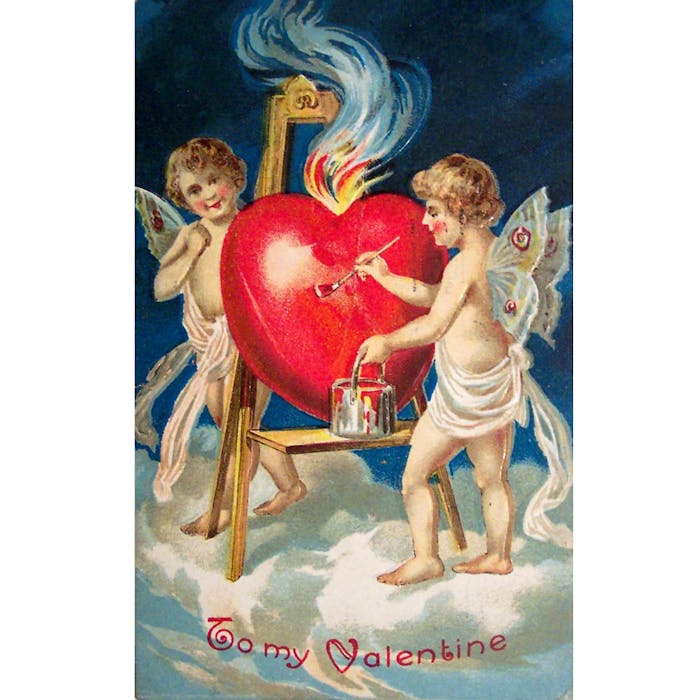
The first Valentine cards in Britain
The first recorded association of Valentine's Day with romantic love is believed to be in a poem by Chaucer in 1382. Poems, tokens of love, and handmade cards followed through the ages until the arrival of printing brought the modern manufactured Valentine's card from the 1800s.
Geoffrey Chaucer's poem The Parliament of Fowls in 1382 is the first mention found in British history of Valentine's Day being associated with romantic love - though, in fact, it portrays a festival in which birds choose their mates.
The assumption is that the date of this avian event would be 14th February, though some historians suggest early May as more likely. However, in the Julian calendar in use in Chaucer's time, 14th February would have fallen on the date now called 23rd February, a time when some birds have started mating and nesting in England. May would be rather late for this.
Later writers such as Samuel Pepys mention Valentine festivities and love tokens. It seems that many lovers created handmade cards with poems and messages inside.
In 1797, a British publisher issued The Young Man's Valentine Writer, which contained suggested sentimental verses for the young lover unable to compose his own. By this time printers had already begun producing a limited number of cards with verses and sketches, called "mechanical valentines."
Possibly the world's oldest pre-printed Valentine's card dates from 1797 and is held in York Castle Museum in York. Printed in London, it is hand coloured (since full color printing didn’t exist in the 18th century) and features elaborate floral patterns, cupids, doves, and a lace effect created by piercing the paper. A verse trails around the edge of the floral pattern:
Since on this ever Happy day, All Nature's full of Love and Play. Yet harmless still if my design,'Tis but to be your Valentine.
From a slightly plaintive note handwritten within, it seems that all was not well in the romantic life of the sender, Catherine Mossday, and the recipient, a Mr. Brown. Catherine’s handwritten message to Mr. Brown in the card indicates he has ignored several previous requests to call on her. (A somewhat jaundiced female journalist might conclude that the effectiveness of Valentine's cards in achieving one's romantic aims has not changed since their conception).
Paper Valentines became so popular in England in the early 19th century that they were assembled in factories. Fancy Valentines were made with real lace and ribbons. In 1835, 60,000 Valentine cards were sent by post in the United Kingdom, despite postage being expensive.
A reduction in postal rates following Sir Rowland Hill's postal reforms with the 1840 invention of the postage stamp (Penny Black) saw the number of Valentines posted increase, with 400,000 sent just one year after its invention, and ushered in the less personal but easier practice of mailing Valentines.
This made it possible for the first time to exchange cards anonymously, which is taken as the reason for the sudden appearance of racy verse in an era otherwise prudishly Victorian.
These days the commercial aspect of the celebrations appear to be increasing year on year, with gifts of chocolates, flowers and even jewellery now being expected to accompany the simple St. Valentine’s Day card. The festival comes at an opportune time for retailers and restaurants, during the late winter/post Christmas slump - so they are determined to make the most of it.
Apparently the UK population spend somewhere in the region of £1.3 billion each year on Valentine's Day.
The image shows an early printed Valentine card from 1909.
Further reading
Links to external websites are not maintained by Bite Sized Britain. They are provided to give users access to additional information. Bite Sized Britain is not responsible for the content of these external websites.
